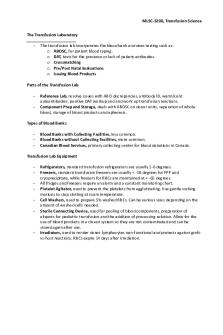Intro to Tinker CAD PDF

| Title | Intro to Tinker CAD |
|---|---|
| Author | Dennis Cruz |
| Course | Elements Of Engineering Design |
| Institution | Borough of Manhattan Community College |
| Pages | 3 |
| File Size | 212.3 KB |
| File Type | |
| Total Downloads | 70 |
| Total Views | 163 |
Summary
Introduction to Tinker Cad...
Description
Experimental report: Introduction to TinkerCAD Name: Dennis Cruz Due Date: 03/27/2019 ESC 111-113 Spring, 2019 Professor: Mahmoud Ardebili
Introduction: TinkerCAD is a free online service for creating basic 3D shapes and developing digital prototypes of electronic components. These prototypes include basic circuits with LED lights, buzzers, switches, and even light sensors. The process used in TinkerCAD is often used for rapid prototyping. Prototyping is a process where we can develop components in a flexible manner than can be quickly updated and modified to test a variety of options when developing a project or product.
Objective: Introduce the use of TinkerCAD to learn how to create electronic circuits and display an 8-digit CUNY ID number.
Materials:
Wires:
Discussion of Results:
To turn on the 7-segment display in the order required, the following wire set up was used: Common anode F
G
A B
Where “A” through “DP” are cathodes. “A” represents the upper LED bar (1), “B” the upper right bar (2), and so on in a clockwise direction. “G” represents the middle LED bar (7) and “DP” (dot point, 8) represents the dot in the lower right side E C
D
DP
Common anode
Numbers 2 3 7 8
Wire connections needed for LED display: On A, B, D, E, G A, B, C, D, G A, B, C A, B, C, D, E, F, G
Off C, F, DP E, F, DP D, E, F, G, DP DP
Taking in consideration that one of the “Common anodes” should always be connected to a positive wire or positive breadboard connections. The desired result was obtained by placing the materials in the following position displayed. In this case, the ID number is 23737383. Notice the use of a resistor in for the positive wires (anode) and the conduction of electricity throughout the breadboard:
Conclusion: LED lightbulbs require of a positive and negative connection (anode and cathode) to turn on. Every 7-segment display was set up and connected throughout the breadboard to as neatly as possible for the optimization of material and a better understanding of the circuit....
Similar Free PDFs

Intro to Tinker CAD
- 3 Pages

pratica tinker cad
- 6 Pages

Intro to CAD CAM-Keychain F14
- 55 Pages

Tinker Cad Guide - For labs 7-9
- 4 Pages

CAD
- 2 Pages

Intro to textiles
- 8 Pages

Intro to Med Term
- 41 Pages

Intro to Oscilloscopes
- 8 Pages

Intro to Sociology
- 34 Pages

Intro to Transfusion Science
- 3 Pages

Intro to computational physics
- 3 Pages

Intro to marketing syllabus
- 19 Pages

Intro to Corp Finance
- 55 Pages
Popular Institutions
- Tinajero National High School - Annex
- Politeknik Caltex Riau
- Yokohama City University
- SGT University
- University of Al-Qadisiyah
- Divine Word College of Vigan
- Techniek College Rotterdam
- Universidade de Santiago
- Universiti Teknologi MARA Cawangan Johor Kampus Pasir Gudang
- Poltekkes Kemenkes Yogyakarta
- Baguio City National High School
- Colegio san marcos
- preparatoria uno
- Centro de Bachillerato Tecnológico Industrial y de Servicios No. 107
- Dalian Maritime University
- Quang Trung Secondary School
- Colegio Tecnológico en Informática
- Corporación Regional de Educación Superior
- Grupo CEDVA
- Dar Al Uloom University
- Centro de Estudios Preuniversitarios de la Universidad Nacional de Ingeniería
- 上智大学
- Aakash International School, Nuna Majara
- San Felipe Neri Catholic School
- Kang Chiao International School - New Taipei City
- Misamis Occidental National High School
- Institución Educativa Escuela Normal Juan Ladrilleros
- Kolehiyo ng Pantukan
- Batanes State College
- Instituto Continental
- Sekolah Menengah Kejuruan Kesehatan Kaltara (Tarakan)
- Colegio de La Inmaculada Concepcion - Cebu


